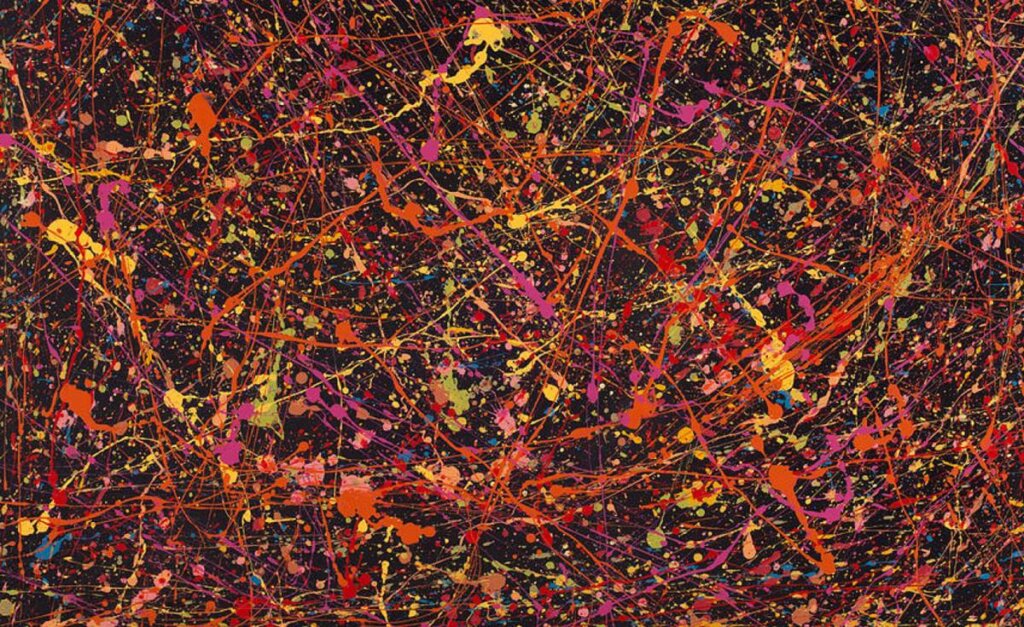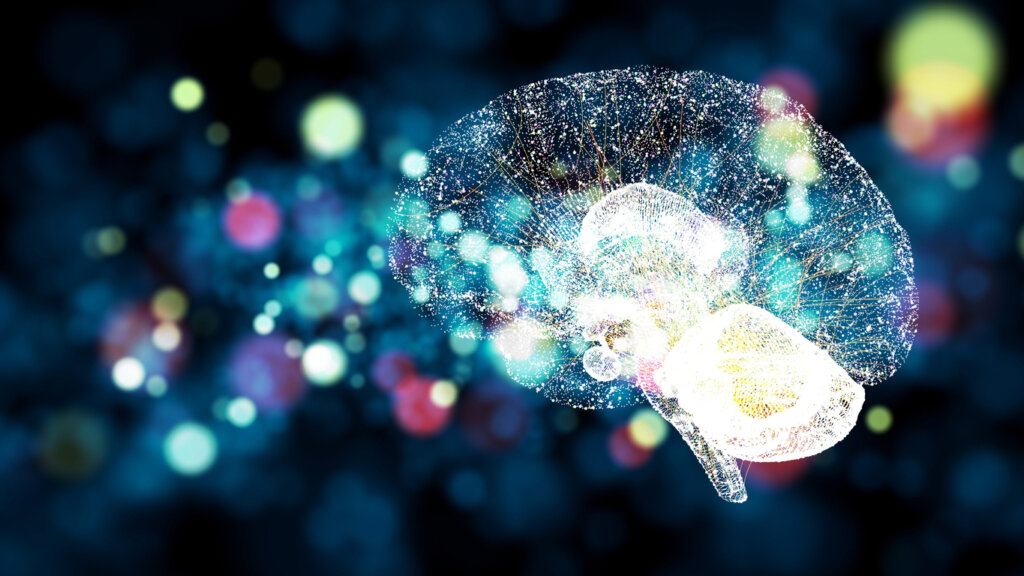Your Brain Likes Jackson Pollock


Written and verified by the psychologist Valeria Sabater
Jackson Pollock, Wassily Kandinski, Joan Miró, Paul Klee… Abstract art isn’t to everyone’s taste, but there are many who savor and delight in these apparently chaotic works. However, these canvases, dominated by imprecise lines, strange shapes, spots here and there, impossible perspectives, and arbitrary colors, cause a certain amount of confusion in others.
As the film director, screenwriter, and artist David Lynch points out, “Beyond what we see, there is what each artistic manifestation makes us feel”. In fact, everyone sees something different. Hence the magic and singularity of art as a psychological channel. Because, although it may surprise you, your brain is perfectly equipped to enjoyall kinds of artistic expression.
Nevertheless, most of us find greater pleasure in appreciating realistic paintings with clearly identifiable figures. For example, works like those offered by Rembrandt or Johannes Vermeer. But, with the advent of impressionism, human beings were exposed to a new phenomenon as stimulating as it was artistically and neurologically decisive.
Today, there’s a new discipline that seeks to understand how the brain processes impressionist and abstract art: neuro-aesthetics. The data it offers is fascinating.
“The modern artist is working with space and time, and expressing his feelings instead of illustrating.”
-Jackson Pollock-

Believe it or not, your brain likes Jackson Pollock
Jackson Pollock was an abstract expressionist artist. He created nearly 400 paintings and 500 drawings. His way of working was somewhat unique. He applied the technique of ‘dripping’ by dripping paint onto a horizontal canvas. If you look at one of his canvases you’ll initially experience a lack of understanding and a feeling of disorder.
In fact, when your brain is exposed to abstract art it experiences frustration. After all, your neural circuitry is programmed to identify patterns. Consequently, your brain prefers order and everything that it can easily process and identify. However, if you’re patient and spend a little more time on this type of work, something happens.
As a matter of fact, your brain likes Jackson Pollock more than you might think. It likes his work because abstract forms invite reflection, cognitive effort, analysis, and imagination. Moreover, beyond obtaining an explanation about what you’re seeing, the emotions that it arouses in you are important.
Abstract art frees you from reality
In 2014, the University of Jerusalem(Israel) conducted an interesting study on abstract art. The researchers highlighted that this artistic modality has a virtue. It frees your mind from everyday reality. In fact, it’s a really stimulating bridge toward your internal universe, emotions, and sensations.
As Jackson Pollock pointed out, the act of painting for him meant being able to illustrate his own feelings and give movement to his memories. The act of placing yourself in front of his work or that by Kandinski, Tapies, or Miró requires making a small emotional and cognitive effort. It invites you to escape from the ordinary and what surrounds you, to transcend to other, more stimulating universes.
Neuroesthetics, the pleasure of finding order in the midst of the imprecise
Semir Zeki is a neurobiologist at University College London (UK). He developed the discipline of neuroesthetics. After many years investigating how the brain processes artistic manifestations, he’s come to a really interesting conclusion.
He claims that the brain experiences great stimulation when looking at impressionist and abstract works. It seems that those blurry, inaccurate, and disordered images stimulate the amygdala, the region closely related to our emotions. The first thing we feel is confusion, but it’s a defiant kind of confusion, full of curiosity.
Therefore, it appears that the artists of the 20th century focused on giving greater importance to lines, color, shape, texture, and light, to create certain sensations in the brain. It’s an invitation to transcend beyond reality and the obvious, and move to other more intimate, perceptive, sensory, and even dreamlike settings.

Abstract art is good for your brain
Maybe you find it hard to believe that your brain likes Jackson Pollock. After all, how can you like a canvas dominated by meaningless paint splotches here and there? It’s certainly true that we all prefer easy-to-recognize images. However, it must be remembered what artists like Pollock, Franz Kline, and Mark Rothko were looking for when they painted.
Abstract art is a much-needed key to the subconscious. It’s a door to your emotions. When you walk through it, you detach from reality. After all, we all need to challenge our brains, and get them out of their comfort zones to invite reflection, self-awareness, and creative thinking.
Seeing these types of paintings stimulates areas of higher strata that favor imagination, analysis, and critical reasoning. Indeed, there are many dimensions of the world that can’t be represented by concrete figures. For example, just think of works like Pablo Picasso’s Guernica. He found another way of expressing the horror of war; in art. No one is left unmoved after viewing this particular work of art.
Jackson Pollock, Wassily Kandinski, Joan Miró, Paul Klee… Abstract art isn’t to everyone’s taste, but there are many who savor and delight in these apparently chaotic works. However, these canvases, dominated by imprecise lines, strange shapes, spots here and there, impossible perspectives, and arbitrary colors, cause a certain amount of confusion in others.
As the film director, screenwriter, and artist David Lynch points out, “Beyond what we see, there is what each artistic manifestation makes us feel”. In fact, everyone sees something different. Hence the magic and singularity of art as a psychological channel. Because, although it may surprise you, your brain is perfectly equipped to enjoyall kinds of artistic expression.
Nevertheless, most of us find greater pleasure in appreciating realistic paintings with clearly identifiable figures. For example, works like those offered by Rembrandt or Johannes Vermeer. But, with the advent of impressionism, human beings were exposed to a new phenomenon as stimulating as it was artistically and neurologically decisive.
Today, there’s a new discipline that seeks to understand how the brain processes impressionist and abstract art: neuro-aesthetics. The data it offers is fascinating.
“The modern artist is working with space and time, and expressing his feelings instead of illustrating.”
-Jackson Pollock-

Believe it or not, your brain likes Jackson Pollock
Jackson Pollock was an abstract expressionist artist. He created nearly 400 paintings and 500 drawings. His way of working was somewhat unique. He applied the technique of ‘dripping’ by dripping paint onto a horizontal canvas. If you look at one of his canvases you’ll initially experience a lack of understanding and a feeling of disorder.
In fact, when your brain is exposed to abstract art it experiences frustration. After all, your neural circuitry is programmed to identify patterns. Consequently, your brain prefers order and everything that it can easily process and identify. However, if you’re patient and spend a little more time on this type of work, something happens.
As a matter of fact, your brain likes Jackson Pollock more than you might think. It likes his work because abstract forms invite reflection, cognitive effort, analysis, and imagination. Moreover, beyond obtaining an explanation about what you’re seeing, the emotions that it arouses in you are important.
Abstract art frees you from reality
In 2014, the University of Jerusalem(Israel) conducted an interesting study on abstract art. The researchers highlighted that this artistic modality has a virtue. It frees your mind from everyday reality. In fact, it’s a really stimulating bridge toward your internal universe, emotions, and sensations.
As Jackson Pollock pointed out, the act of painting for him meant being able to illustrate his own feelings and give movement to his memories. The act of placing yourself in front of his work or that by Kandinski, Tapies, or Miró requires making a small emotional and cognitive effort. It invites you to escape from the ordinary and what surrounds you, to transcend to other, more stimulating universes.
Neuroesthetics, the pleasure of finding order in the midst of the imprecise
Semir Zeki is a neurobiologist at University College London (UK). He developed the discipline of neuroesthetics. After many years investigating how the brain processes artistic manifestations, he’s come to a really interesting conclusion.
He claims that the brain experiences great stimulation when looking at impressionist and abstract works. It seems that those blurry, inaccurate, and disordered images stimulate the amygdala, the region closely related to our emotions. The first thing we feel is confusion, but it’s a defiant kind of confusion, full of curiosity.
Therefore, it appears that the artists of the 20th century focused on giving greater importance to lines, color, shape, texture, and light, to create certain sensations in the brain. It’s an invitation to transcend beyond reality and the obvious, and move to other more intimate, perceptive, sensory, and even dreamlike settings.

Abstract art is good for your brain
Maybe you find it hard to believe that your brain likes Jackson Pollock. After all, how can you like a canvas dominated by meaningless paint splotches here and there? It’s certainly true that we all prefer easy-to-recognize images. However, it must be remembered what artists like Pollock, Franz Kline, and Mark Rothko were looking for when they painted.
Abstract art is a much-needed key to the subconscious. It’s a door to your emotions. When you walk through it, you detach from reality. After all, we all need to challenge our brains, and get them out of their comfort zones to invite reflection, self-awareness, and creative thinking.
Seeing these types of paintings stimulates areas of higher strata that favor imagination, analysis, and critical reasoning. Indeed, there are many dimensions of the world that can’t be represented by concrete figures. For example, just think of works like Pablo Picasso’s Guernica. He found another way of expressing the horror of war; in art. No one is left unmoved after viewing this particular work of art.
All cited sources were thoroughly reviewed by our team to ensure their quality, reliability, currency, and validity. The bibliography of this article was considered reliable and of academic or scientific accuracy.
- Aviv V. What does the brain tell us about abstract art? Front Hum Neurosci. 2014 Feb 28;8:85. doi: 10.3389/fnhum.2014.00085. PMID: 24616683; PMCID: PMC3937809.
- Ekweariri D. Appreciation of Art as a Perception Sui Generis: Introducing Richir’s Concept of “Perceptive” Phantasia. Front Psychol. 2021 May 28;12:576608. doi: 10.3389/fpsyg.2021.576608. PMID: 34122206; PMCID: PMC8195333.
- Rasche SE, Beyh A, Paolini M, Zeki S. The neural determinants of abstract beauty. Eur J Neurosci. 2023 Jan 12. doi: 10.1111/ejn.15912. Epub ahead of print. PMID: 36633957.
This text is provided for informational purposes only and does not replace consultation with a professional. If in doubt, consult your specialist.







